Check out this activity calendar to keep yourself active and engaged this month!
“You’re superhuman up there”: Parkinson’s in space
Journeying into space is an incredible feat – it’s even more impressive when you’ve been diagnosed with Parkinson’s.
Michael ‘Rich’ Clifford found out he had the condition in 1994. Two years later he undertook his third journey into space on the US Atlantis shuttle.
In webcast conversation with Dr Ray Dorsey, co-author of Ending Parkinson’s Disease: A Prescription for Action, the former astronaut outlined his experience working with US space agency NASA, spoke about his exposure to pesticides – and shared what his symptoms were like in space.
“It was an easy decision to fly”
“When I got diagnosed with Parkinson’s I thought it was over and NASA asked me what I wanted to do,” Clifford told Dorsey. “I said, ‘You mean it’s up to me?’ and they said, ‘Yeah, we consider you still qualified for flight.’ I said, ‘Well, I’ll go fly again.’ And it was as easy as that.”
“It was special, because I’d done a lot of preparatory work on that – all the EVA [Extra-Vehicular Activity] simulations and validation of the positions and equipment we were going to use – so it was an easy decision to fly.”
Asked if he noticed his Parkinson’s symptoms during the seven-day period in space, Clifford said: “I felt my right-hand tremor one time, but it was very mild… I think it showed more in space. I could feel it more. When we re-entered for landing, I noticed with the pull of g-forces, my hands would go down, and it was much easier to work with.”
Lifting heavy equipment, weighing over 150 pounds, was significantly easier: “I could have just dragged it along with my fingernails – it was neat. You’re superhuman up there.”
Parkinson’s and pesticides
Growing up in Utah, US, Clifford had no family history of Parkinson’s. However, he told Dorsey, he was exposed to pesticides through a high-school job cutting grass and while working as a private pilot: “I didn’t know it was dangerous. I didn’t like the way it smelled, but it was just a job.”
Then, working as a gas station attendant Clifford encountered trichloroethylene (TCE) – another substance that has been linked with Parkinson’s.
“In the shop we would get grease spills all the way and would clean it up. I didn’t realise there was a nasty chemical in it, but it was efficient for cleaning up the grease. I did that for about three years.”
“We should be getting rid of these chemicals,” he told Dorsey, who has written about the impact of pesticides in his book. “It’s going to take somebody pushing it, like you are, to get this done.”
“Just because you have Parkinson’s, you don’t have to give up”
When he was first diagnosed, Clifford didn’t tell the rest of his crew that he had the condition. However, he decided to announce it publicly in 2011 – 17 years after his diagnosis – to “get the issue out on the table”.
“I thought it was time to reveal it. I felt it was a good thing for the community for me to announce I had Parkinson’s,” he said.
He was then encouraged by his doctor, whose son was a film producer, to share his story in a movie. ‘The Astronaut’s Secret’, a documentary released in 2014, covers Rich’s experience working with NASA while living with the condition.
Rich hopes his story inspires others with the condition: “Just because you have Parkinson’s, you don’t have to give up.”
How to Deal with Cabin Fever
Cabin fever is often associated with being cooped up on a rainy weekend or stuck inside during a winter blizzard.
In reality, though, it can actually occur anytime you feel isolated or disconnected from the outside world.
Indeed, cabin fever is a series of emotions or symptoms people experience when they’re confined to their homes for extended periods of time. This may be due to a variety of circumstances, such as a natural disaster, lack of transportation, or even social distancing for pandemics like COVID-19.
Recognizing the symptoms of cabin fever and finding ways to cope may help make the isolation easier to deal with. Keep reading to learn more about how to do this.
In popular expressions, cabin fever is used to explain feeling bored or listless because you’ve been stuck inside for a few hours or days. But that’s not the reality of the symptoms.
Instead, cabin fever is a series of negative emotions and distressing sensations people may face if they’re isolated or feeling cut off from the world.
These feelings of isolation and loneliness are more likely in times of social distancing, self-quarantining during a pandemic, or sheltering in place because of severe weather.
Indeed, cabin fever can lead to a series of symptoms that can be difficult to manage without proper coping techniques.
Cabin fever isn’t a recognized psychological disorder, but that doesn’t mean the feelings aren’t real. The distress is very real. It can make fulfilling the requirements of everyday life difficult.
Symptoms of cabin fever go far beyond feeling bored or “stuck” at home. They’re rooted in an intense feeling of isolation and may include:
- restlessness
- decreased motivation
- irritability
- hopelessness
- difficulty concentrating
- irregular sleep patterns, including sleepiness or sleeplessness
- difficulty waking up
- lethargy
- distrust of people around you
- lack of patience
- persistent sadness or depression
Your personality and natural temperament will go a long way toward determining how cabin fever affects you.
Some people can weather the feelings more easily; they may take on projects or dive into creative outlets to pass the time and ward off the symptoms.
But others may face great difficulty with managing day-to-day life until these feelings pass.
Because cabin fever isn’t a recognized psychological condition, there’s no standard “treatment.” However, mental health professionals do recognize that the symptoms are very real.
The coping mechanism that works best for you will have a lot to do with your personal situation and the reason you’re secluded in the first place.
Finding meaningful ways to engage your brain and occupy your time can help alleviate the distress and irritability that cabin fever brings.
The following ideas are a good place to start.
Spend time outdoors
Research shows that time spent in nature is time well spent for mental health.
Not only does spending time outdoors boost your cognitive function, it may also help:
- improve your mood
- alleviate stress
- boost feelings of well-being
Depending on your reason for isolating, be sure to check all local regulations and avoid any spaces that are closed for safety or health reasons.
If getting outdoors isn’t an option, you could try:
- opening up your windows to let the outdoor breeze in
- adding a bird feeder outside your window to bring birds closer to your living space
- ordering or buying fragrant, fresh-cut flowers and placing them where you can see and smell them throughout the day
- growing herbs or small plants on a windowsill, patio, or balcony
Give yourself a routine
You may not have a 9-to-5 job to report to while you’re isolated, but a lack of routine can cause disruptions in eating, sleeping, and activity.
To keep a sense of structure, try to create a daily routine that consists of work or house projects, mealtimes, workout time, and even downtime.
Having an outline for your day helps you keep track of the trajectory of your hours and gives you mini “goals” to hit throughout the day.
Maintain a social life
So you can’t go to the movies or meet your friends for dinner. But you can still “meet up” with them — just in a different way.
Use real-time video streaming services, like FaceTime, Zoom, or Skype, to chat with your friends, colleagues, and loved ones. Face-to-face chat time can keep you in contact with the “outside world” and make even your small home feel a whole lot bigger.
Connecting with others who are in a similar situation can also help you feel that you’re not alone. Sharing your thoughts, emotions, and challenges with others can help you realize that what you’re feeling is normal.
Connecting with others may even help you find creative solutions to an issue you’re grappling with.
Express your creative side
Did you play a band instrument in high school? Were you once interested in painting? Do you have stacks of vacation photos you once promised yourself you’d put in a scrapbook? Is there a recipe you’ve always wanted to try but never had the time?
Use your time in isolation to reconnect with creative activities that you’ve had to put on hold because life got too busy. Spending time on creative activities keeps your brain busy.
Keeping your mind occupied and engaged may help ward off feelings of boredom or restlessness and make the time pass more quickly.
Carve out some ‘me time’
If you live with others, feelings of cabin fever may be intensified by the nearness of other individuals.
Parents have responsibilities to children; partners have responsibilities to one another. But that doesn’t mean you shouldn’t have any time on your own.
Give yourself time “away” from others to relax. Find a quiet place to read a book, meditate, or pop in some earbuds for an engaging podcast.
If you’re feeling stressed, you may even want to tune in to a podcast on mental health or anxiety.
Break a sweat
Research has shown that people who exercise regularly are less prone to anxiety than people who don’t exercise. That’s because physical activity lowers your body’s stress hormones, such as cortisol.
At the same time, exercise causes your brain to release endorphins. These neurochemicals can boost your mood and overall feeling of well-being.
If you can’t get outside, you can do a strength training workout at home using just your body weight or simple equipment, like dumbbells or resistance bands.
Or you can put together your own routine by focusing on a few basic but effective exercises, such as:
- pushups
- squats
- burpees
- lunges
- planks
If you need a more structured program, there are plenty of online exercise options on YouTube and through various exercise apps.
Chill out
Not every minute of every day you spend at home has to be planned. Give yourself some time to rest. Look for constructive ways to relax.
Mindfulness, deep breathing, and relaxation exercises may help you maintain your emotional health and balance feelings of isolation or frustration.
When to Get Help
Cabin fever is often a fleeting feeling. You may feel irritable or frustrated for a few hours, but having a virtual chat with a friend or finding a task to distract your mind may help erase the frustrations you felt earlier.
Sometimes, however, the feelings may grow stronger, and no coping mechanisms may be able to successfully help you eliminate your feelings of isolation, sadness, or depression.
What’s more, if your time indoors is prolonged by outside forces, like weather or extended shelter-in-place orders from your local government, feelings of anxiety and fear are valid.
In fact, anxiety may be at the root of some cabin fever symptoms. This may make symptoms worse.
If you feel that your symptoms are getting worse, consider reaching out to a mental health professional who can help you understand what you’re experiencing. Together, you can identify ways to overcome the feelings and anxiety.
Of course, if you’re in isolation or practicing social distancing, you’ll need to look for alternative means for seeing a mental health expert.
Telehealth options may be available to connect you with your therapist if you already have one. If you don’t, reach out to your doctor for recommendations about mental health specialists who can connect with you online.
If you don’t want to talk to a therapist, smartphone apps for depression may provide a complementary option for addressing your cabin fever symptoms.
The Bottom Line
Isolation isn’t a natural state for many people. We are, for the most part, social animals. We enjoy each other’s company. That’s what can make staying at home for extended periods of time difficult.
However, whether you’re sheltering at home to avoid dangerous weather conditions or heeding the guidelines to help minimize the spread of a disease, staying at home is often an important thing we must do for ourselves and our communities.
If and when it’s necessary, finding ways to engage your brain and occupy your time may help bat back cabin fever and the feelings of isolation and restlessness that often accompany it.
LOL: Reduce Caregiver Stress with a Good Laugh
For family caregivers, the mountains of laundry, endless messes that must be cleaned up, constant doctor’s appointments, complete surrender of one’s personal life and the painful process of watching aging loved ones decline is no laughing matter. We usually feel like crying more often than we feel like laughing.
But many experts say that laughing in even the grimmest situations is good for both our mental and physical health. A case of the giggles can relieve stress and boost “happy chemistry” within the body. Most caregivers desperately need to decompress and lift their spirits, and one way to go about meeting these needs is to teach yourself how to laugh despite the challenges you face every day.
The Science Behind the Benefits of Laughter
Gelotology is the study of the psychological and physiological effects of laughter on the body. Numerous scientific studies in this field suggest that laughter is a powerful form of complementary medicine that yields the following benefits.
- Improved blood flow: William F. Fry, M.D., emeritus professor of psychiatry and behavioral sciences at Stanford University and pioneer of gelotology, and Michael Miller, M.D., cardiologist and professor at the University of Maryland School of Medicine, found that laughter causes the tissue that lines the insides of blood vessels to dilate or expand to increase blood flow to bodily tissues. This effect was so pronounced that it was similar to the increased blood flow caused by aerobic activity or statin therapy for lowering cholesterol.
- Strengthened immune responses: Research led by Lee S. Berk, DrPH, a medical researcher at Loma Linda University, has found that laughter has a positive effect on the immune system, including increased production of antibodies and activation of protective cells like T-cells and Natural Killer cells that fight viral infections and tumor cells.
- Reduced blood pressure: A study conducted in Japan showed that seniors attending adult day care experienced significant reductions in systolic blood pressure and heart rate following regular laughter therapy sessions.
- Increased pain relief: Researchers from Oxford University studied the effect of laughter on pain perception and found that “social laughter elevates pain thresholds both in the laboratory and under naturalistic conditions.” Endorphins released while laughing can have an opiate effect thereby increasing pain tolerance.
The benefits of laughter may be tied to human physiology. “Babies laugh long before they learn how to talk,” psychologist and laughter coach Annette Goodheart explains. “Laughing is a wonderful, cathartic process. I’ve worked with Auschwitz survivors who told me that the people who were able to laugh were the ones who survived.”
Laughter may seem like an inappropriate reaction to difficult scenarios, but just because you laugh doesn’t mean you don’t care or understand the gravity of a particular situation. Laughing in response to even the saddest circumstances helps you deal with your emotions rather than keeping them bottled up. Sometimes laughter may lead to tears, but Sebastien Gendry, renowned yoga instructor and CEO of the American School of Laughter Yoga, assures that’s perfectly normal. “You cannot open up a box of emotions selectively. A hearty bout of laughter may lead to a good cry, which is also cathartic. If you have unexpressed emotions, laughter may help bring them out.”
Life isn’t always funny, particularly when caring for loved ones who are chronically ill or dying. Laughter forces you to be at peace with who you are and where you are. No one has a perfect life. “Laughter therapy is about how you react in the face of adversity. Sometimes, you can’t control your circumstances, but you can always control your reaction. How you react is always negotiable,” Gendry says.
How to Laugh When You Don’t Feel Like It
To reap the benefits of laughter, you don’t even need to be happy or have a reason to laugh. Faking it works just fine. “The body cannot differentiate between fake and real laughter; you get the same physiological and psychological benefits,” Gendry explains. “We change physiologically when we laugh. We stretch muscles in our face and body, our pulse and blood pressure go up, and we breathe faster, which sends more oxygen to our tissues.”
The American School of Laughter Yoga recommends the following laughter exercises that caregivers can try at home. You can experiment with these exercises for 30 seconds or a few minutes at a time—whatever feels good to you.
- Gradient Laughter: Fake a smile, giggle and then laugh slowly. Gradually increase the tempo and volume of your laughter.
- Hearty Laughter: Spread your arms out beside you, look up and laugh heartily from deep down inside.
- I Don’t Know Why I Am Laughing: Laugh (faking it is perfectly fine) and shrug your shoulders as you look at yourself in a mirror. Use your eyes and body language to convey the message that you have no idea why you are laughing!
- Find Your Laughter Center: Probe your head with one finger as if looking for your laughter center. Imagine that each spot you push on triggers a different type of laughter and then act it out.
- Conductor Laughter: Imagine you are a conductor. Direct an imaginary orchestra with enthusiastic arm movements as you sing a song of your choice in laughter sounds only, such as “ho ho ho” or “ha ha ha.”
Join a Laughter Club
Since Dr. Madan Kataria, a family physician from Mumbai, India, launched the first Laughter Club in 1995, Laughter Yoga has become a global phenomenon. This type of yoga (also known as Hasyayoga) is a dual body/mind approach to health and wellness. Today, there are Laughter Clubs around the world where people come together to use unconditional laughter and yogic breathing (Pranayama) to relieve stress and promote health. There are more than 100 Laughter Clubs across the U.S. and most of them offer free weekly meetings. You can find a club near you by visiting the Laughter Yoga University website. There are also laughter sessions available via telephone and Skype that are perfect for busy caregivers to participate in.
Learn to Minimize Caregiver Stress
The reality is that stress will always be an unavoidable part of life. The only aspect you can control is how you choose to deal with the negativity and tension that you encounter. Laughter is a simple and free way to cope with life’s ups and downs.
Doctors Prescribing Music Therapy
Music has proven time and again to be an important component of human culture. From its ceremonial origin to modern medical usage for personal motivation, concentration, and shifting mood, music is a powerful balm for the human soul. Though traditional “music therapy” encompasses a specific set of practices, the broader use of music as a therapeutic tool can be seen nowadays as doctors are found recommending music for a wide variety of conditions.
1. Music Helps Control Blood Pressure and Heart-Related Disorders


According to The Cardiovascular Society of Great Britain, listening to certain music with a repetitive rhythm for least ten seconds can lead to a decrease in blood pressure and a reduced heart rate. Certain classical compositions, if matched with human body’s rhythm, can be therapeutically used to keep the heart under control. The Oxford University study states, “listening to music with a repeated 10-second rhythm coincided with a fall in blood pressure, reducing the heart rate” and thus can be used for overcoming hypertension.
2. Listening and Playing Music Helps Treat Stress and Depression
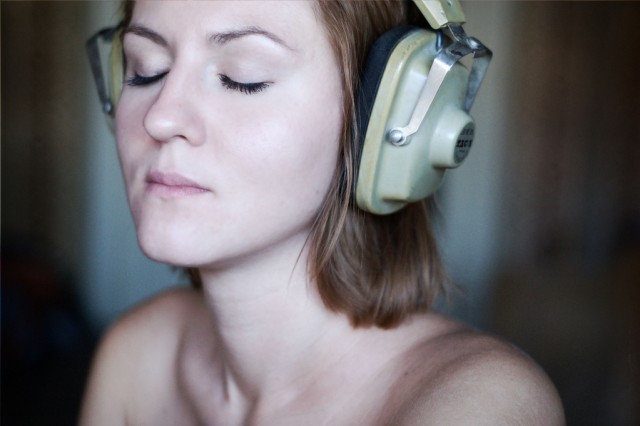

When it comes to the human brain, music is one of the best medicines. A study at McGill University in Canada revealed that listening to agreeable music encourages the production of beneficial brain chemicals, specifically the “feel good” hormone known as dopamine. Dopamine happens to be an integral part of brain’s pleasure-enhancing system. As a result, music leads to great feeling of joy and bliss.
It’s not only listening to music that has a positive effect on stress and depression. The Namm Foundation has compiled a comprehensive list of benefits of playing music, which includes reducing stress on both the emotional level and the molecular level. Additionally, studies have shown that adults who play music produce higher levels of Human Growth Hormone (HgH), which according to Web MD, is a necessary hormone for regulating body composition, body fluids, muscle and bone growth, sugar and fat metabolism, and possibly heart function.
For more on how music can be composed to benefit the brain, read about States of Consciousness and Brainwave Entrainment.
3. Music Therapy Helps Treat Alzheimer’s Disease
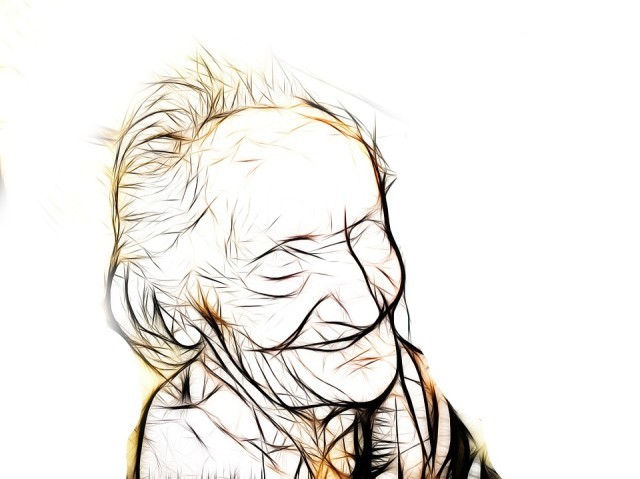

Music therapy has worked wonders on patients suffering from Alzheimer’s disease. With Alzheimer’s, people lose their capacity to have interactions and carry on with interactive communications. According to studies done in partnership with the Alzheimer’s Foundation of America, “When used appropriately, music can shift mood, manage stress-induced agitation, stimulate positive interactions, facilitate cognitive function, and coordinate motor movements.”
4. Studying Music Boosts Academic Achievement in High Schoolers


Early exposure to music increases the plasticity of brain helping to motivate the human brain’s capacity in such a way that it responds readily to learning, changing and growing. “UCLA professor James S. Catterall analyzed the academic achievement of 6,500 low-income students. He found that, by the time these students were in the 10th grade, 41.4% of those who had taken arts courses scored in the top half on standardized tests, contrasted with only 25% of those who had minimal arts experience. The arts students also were better readers and watched less television.” This goes to show that in the formative stages of life, kids who study music do much better in school.
5. Playing Guitar (and Other Instruments) Aids in Treating PTSD


The U.S. Department of Veterans Affairs shared a study in which veterans experiencing Post Traumatic Stress Disorder (PTSD) experienced relief by learning to play guitar. The organization responsible for providing guitars, Guitars For Vets “enhances the lives of ailing and injured military Veterans by providing them free guitars and music instruction.” Playing music for recovery from PTSD resembles traditional music therapy, in which patients are encouraged to make music as part of their healing process. Guitar is not the only instrument that can help PTSD. In fact, Operation We Are Here has an extensive list of Therapeutic Music Opportunities For Military Veterans.
6. Studying Music Boosts Brain Development in Young Children
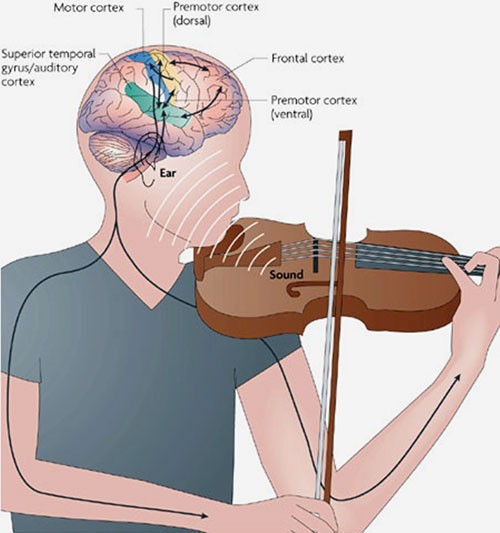

A research-based study undertaken at the University of Liverpool in the field of neuroscience has light to shed on the beneficial effects of early exposure to music. According to the findings, even half an hour of musical training is sufficient to increase the flow of blood in the brain’s left hemisphere, resulting in higher levels of early childhood development.
The Portland Chamber Orchestra shares, “Playing a musical instrument involves multiple components of the central (brain and spinal cord) and peripheral (nerves outside the brain and spinal cord) nervous systems. As a musician plays an instrument, motor systems in the brain control both gross and fine movements needed to produce sound. The sound is processed by auditory circuitry, which in turn can adjust signaling by the motor control centers. In addition, sensory information from the fingers, hands and arms is sent to the brain for processing. If the musician is reading music, visual information is sent to the brain for processing and interpreting commands for the motor centers. And of course, the brain processes emotional responses to the music as well!”
7. Music Education Helps Children Improve Reading Skills


Journal Psychology of Music reports that “Children exposed to a multi-year program of music tuition involving training in increasingly complex rhythmic, tonal, and practical skills display superior cognitive performance in reading skills compared with their non-musically trained peers.” In the initial stages of learning and development, music arouses auditory, emotional, cognitive and visual responses in a child. Music also aids a child’s kinesthetic development. According to the research-supported evidence, a song facilitates language learning far more effectively than speech.
8. Listening To Music Helps Improve Sleep


According to The Center for Cardiovascular Disease in China, listening to music before and during sleep greatly aids people who suffer from chronic sleep disorders. This “music-assisted relaxation” can be used to treat both acute and chronic sleep disorders which include everything from stress and anxiety to insomnia.
9. Playing Didgeridoo Helps Treat Sleep Apnea
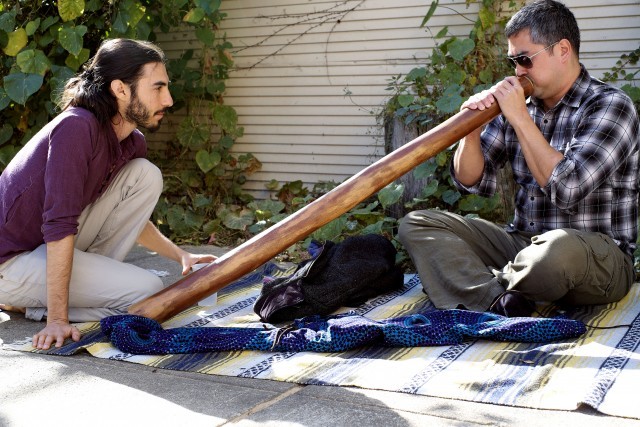

A study published in the British Medical Journal shows that people suffering from sleep apnea can find relief by practicing the Australian wind-instrument known as the didgeridoo. Patients who played the didgeridoo for an average of 30-minutes per day, 6 days per week, saw significant increases in their quality of sleep and decreases in daytime tiredness after a minimum period of 3-months of practice. Dr. Jordan Stern of BlueSleep says, “The treatment of sleep apnea is quite challenging because there is not a single treatment that works well for every patient. The didgeridoo has been used to treat sleep apnea and it has been shown to be effective in part because of strengthening of the pharyngeal muscles, which means the muscles of the throat, as well as the muscles of the tongue.”
Teen Scientist Working on Parkinson’s Treatment
In North Texas, bright young minds are hard at work and one in particular may be on the verge of shaping the future for patients with Parkinson’s disease.
At 14 years old, it seems there’s nothing Anushka Sridhar hasn’t done.
“Outside of school, I play volleyball, basketball, I’m a third-degree black belt in taekwondo. I do an Indian cultural dance and I’m also part of Destination Imagination,” the Plano ISD 8th grader said.
Sridhar is also a budding scientist, who won the grand prize in her school’s science fair.
She created a device designed to lessen the tremors experienced by Parkinson’s patients.
“My great aunt passed away. With her tremors though, she had a lot of difficulties just with daily activity,” Sridhar said. “So that sparked an idea for me to try and create like a wrist band that could mitigate the tremors.”
For two months, she dove head first into researching Parkinson’s disease, a neurological disorder that causes hand tremors and imbalance.
She learned about how vibration therapy can help the motor skills of Parkinson’s patients.
The idea is the vibrations fool the brain and distract it from the physical sensation of tremors so that patients have an easier time writing.
It’s a well-known theory that even the goliaths of the industry, like Microsoft, are looking into.
Sridhar used common materials, like velcro and simple curcuits to create a prototype wristband. She reached out to the Dallas Area Parkinsonism Society, or DAPS, for test subjects willing to strap on her homemade wristband.
“They were excited that a young person would take that kind iof interest. You can’t help but be impressed when you hear her,” DAPS Executive Director Mike Miles said.
The partnership blossomed, and Sridhar connected with people five times her age. Each one seem impressed with the device, that not only worked, but gave them hope!
“I’m sure she will study that and improve on it and one day, we will have a device that we could put on and write normally,” said 81-year-old Ryan Wagner of Plano.
Sridhar said she planned to expand her research and build more prototypes of her wristband.
She hopes to one day affect the lives of every Parkinson’s patient.
She now advances to the Plano ISD district fair and the Dallas regional science fair.
“Poor Me”? Or “Lucky Me!”
Laurie Prochnow is a recruiter and a business owner in Wausau. She was diagnosed with Parkinson’s 6 years ago, and she launched a PD Support Group in Wausau in early 2019.
Together with her company, Management Recruiters, Laurie put together a couple of great videos sharing some of the lessons she has learned over the last several years of having Parkinson’s.
‘It is not hopeless’: Parkinson’s disease doesn’t stop Austin duo from making popular art
One day, Verna Earl Hamilton Grice discovered she could not walk up the driveway.
That was the first sign.
Later, she felt tremors on one side of her body.
Ten years ago, she was diagnosed with Parkinson’s disease.
That’s when she stopped painting.
“I got tired,” Verna, 88, says. “I didn’t do it for 10 years. It’s labor intensive. Susan kept on.”
That would be her daughter Susan Grice, 63, who shares Verna’s zeal for making art.
“She focused instead on trying to figure out the illness,” Susan says of her mother. “She went to support groups such as Power for Parkinson’s. They promote exercise.”
Verna: “I was just hanging on.”
Verna, a native of Lake Charles, La., nevertheless made significant progress. A return to painting has helped.
Susan: “Her doctor says she is in the top 1 percent of his patients.”
“I walk really well,” Verna says with a laugh. “If you walk well, they think you are OK. I have my ups and downs. My ups are longer than they were, because I am so busy painting these days. Just looking at the paint seems to help.”
In their airy home studio, Verna and Susan paint together on wood. They seal the paintings so they can be hung outdoors. Their subjects include images inspired by Old Masters, original ideas, nature and abstract arrangements.
As in the past, the mother-and-daughter team enjoys a steady demand for their output, which could be called garden art. They recently staged an exhibition that attracted more than 60 guests to their house and garden in Westover Hills.
“It makes me feel better, I noticed,” Verna says. “How did I start again? My dentist was going out of his way to be sweet to me — I hate going to the dentist — so I brought him one of my pictures. He loved the picture. He had to have two more. They hang in the dentist’s office for others to enjoy.”
“She came home and said, ‘Oh no. I’ve got to get painting. We’re back in business,’” Susan says. “Since then, we couldn’t stop.”
The Grice method
Susan and Verna make 24-by-24-inch paintings on 3/4-inch exterior plywood.
“It’s done directly on the wood,” Verna says. “We prime it and then seal it several times after painting.”
“It’s like making signs,” Susan says. “They last for years and years. We don’t tell the exact formula. It’s a secret. A carpenter friend makes the frames of cedar.”
Mother and daughter come to the project with similar artistic sensibilities.
Susan, former director of psychiatric nursing at Seton Shoal Creek, studied at the Glassell School of Art, the teaching institute of Houston’s Museum of Fine Arts.
As for Verna, she was artistic as a child in Louisiana. She painted a bit in high school. She followed that inclination to Mexico City, where she studied Spanish and art in 1948 and ’49.
“Diego Rivera and Frida Kahlo were very much around,” Verna says. “I remember seeing Diego’s mural at a hotel there.”
A child of the Depression, Verna did not expect much more from life than hard work.
Her father, Vernon Earl Hamilton, took whatever jobs he could land.
“I never knew what to say when they asked, ‘What does your Daddy do?’” Verna recalls. “There were so many things, since it was the Depression. I know he owned slot machines on the side. He put them in little bars around Lake Charles. He sold one to let me go to Mexico.”
Her mother, Ruth McLaughlin Grice, worked as a bookkeeper for an ice company.
“She went to work to get me braces,” Verna says. “Guess what? She was working till she retired. I never got my braces.”
Verna has one sister, Helen Ruth Garman, who at age 84 is a Ride Austin contract driver.
Even Verna’s Mexican adventure came with a practical work goal.
“I was hoping to get a job using my Spanish,” she says, “but couldn’t find one. So I worked for a construction company for a while, then went to Houston. That’s where I met my husband, a young lawyer named Harrison Marion Grice.”
The newlyweds settled down in southeastern Houston and raised three children: Susan, 63, Charles, 61, and Laurel, 54.
Verna did not stop working.
“I sold real estate for a while,” she says. “I was a bilingual secretary in Spain after my husband died and also a legal secretary. I worked for the National Treasury Employees Union and lived in Washington for eight years. I was marching with the union when the older President Bush tried to freeze employees’ salaries to pay down the national debt. I was arrested and handcuffed, stuffed into a paddy wagon and taken to jail. The one thing I remember is that the toilet in the jail is right out in the middle of the room. That’s punishment enough.”
The family moved to Austin’s Northwest Hills in Austin in 1975. She retired in 1996 as the assistant to her union’s president and purchased the Westover Hills home in 2001.
Why paint?
“I just got in the mood,” Verna says of her first adult painting 15 years ago. “I got bored with looking out at those bare fences around the patio. They needed some color. That’s when we started making groups of paintings.”
Susan started painting and selling art right after Verna started in 2004. They’ve sold more than 100 paintings, many of them at places that also sell architectural pieces or items for the garden.
Verna finds that Parkinson’s is only a partial barrier.
“With just about any disability, you can still paint,” Verna says. “If you find someone to help on some things, you can still enjoy the magic of painting.”
“You let me draw straight lines for you sometimes,” Susan interjects. “With her permission and very specific instructions, she will direct me to draw a line. It allows her to still paint, which is fantastic.”
Both Grices promote Power for Parkinson’s, the nonprofit support group that offers free exercise, dance and singing classes at locations in Austin, Round Rock, West Lake Hills and Lakeway.
“I started going when there were just a few things we could do there, and now there are hundreds of activities,” Verna says. “I swim laps. I play bocce ball. I boxed. I decided my body is not made for boxing. Age 88 is too old to dive into the mat.”
Verna does not paint to inspire others, but she’s gratified it might do so.
“I just want people to know that, at 88, you can still have some fun and enjoy life,” Verna says. “A lot of people with Parkinson’s think that this is the end. But you can slow it down. You realize how important your brain is. Don’t get me wrong. It’s a bear of a disease. But it is not hopeless. There are lots of things you can do. Do it, try it — and get creative with it.”

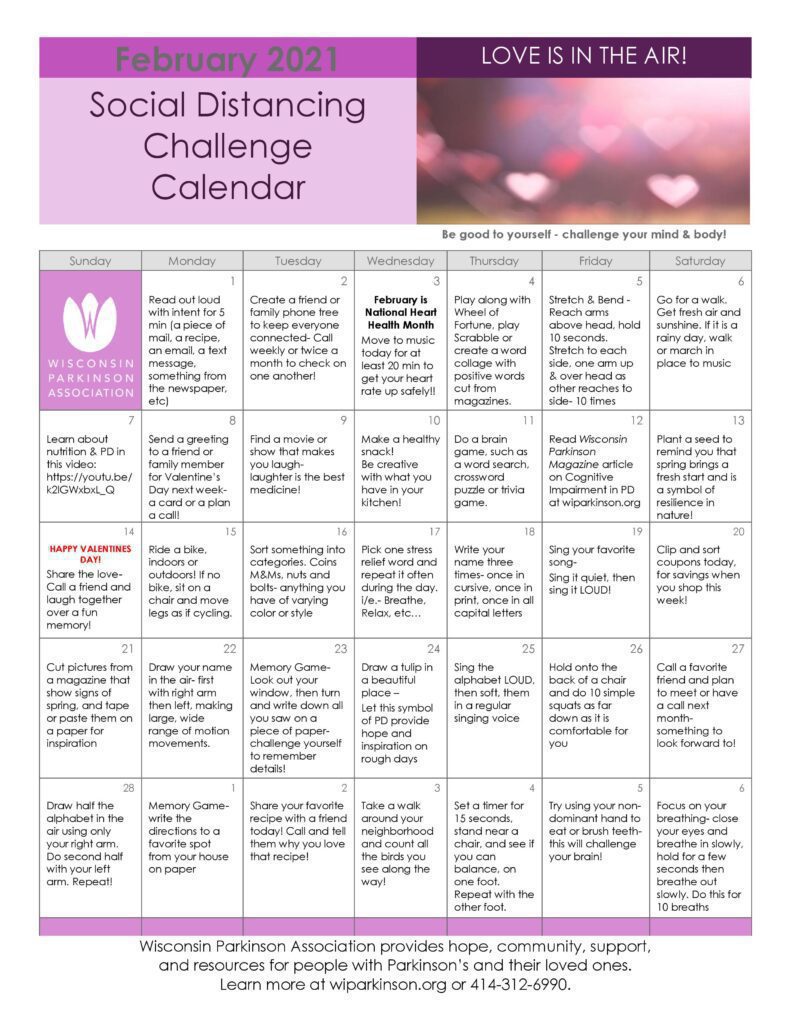

Recent Comments